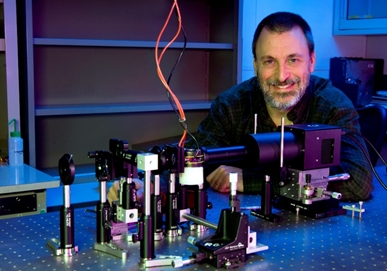Dr. Gorden Videen
U.S. Army Research Laboratory, Adelphi, MD 20782

Light Scattering and Remote Sensing of Small Particles
Unless we are looking at a light source, all the light that we see has been scattered. The way that light is scattered and absorbed is determined by the composition and morphology of the particles with which the light has interacted. The goal of remote sensing is to gain information about those particles from their scattered light, the so-called inverse problem. It has long been recognized that an exact solution to this problem cannot be achieved. However, recent advances have allowed us to place constraints on the system, that when combined with a priori knowledge, can provide significant information. I plan to illustrate remote sensing of particles using examples of terrestrial and planetary science.
Bio: Dr. Gorden Videen is a physicist at the U.S. Army Research Laboratory where his research focus is on light-scattering properties of irregular particles, like dust. He received his Ph.D. in Optics at the University of Arizona in 1992 studying rough surfaces and contaminants on mirrors. He spent nearly three years researching atmospheric aerosols as a postdoc at Dalhousie University, followed by two more years developing aerosol detection techniques as an NRC postdoctoral fellow at New Mexico State University. He has worked as an atmospheric physicist in Maryland since 1997 and has developed unique theories to calculate the light scattering from irregular particle systems; e.g., particles on substrates, aggregate particles, and cellular systems. He has over 200 peer-reviewed publications in scientific journals dealing with experimental, theoretical, and computational aspects of light scattering. In 2005-2007 he undertook a sabbatical at the University of Amsterdam Astronomy Department where he developed efficient algorithms to calculate light scattering from irregular particles and applied this research to asteroids and planetary regolith. In 2014 he undertook a sabbatical at the Universidad de Cantabria where his focus was on plasmonic resonances of nanoparticles. He is also currently a senior research scientist at the Space Science Institute where he used photopolarimetric techniques to retrieve properties of the moon, comets, and asteroids and is a founding member of the Center for Extrasolar Planetary Systems.
